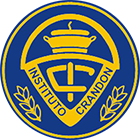Institucional
April 16th 2020

The Coronavirus pandemic has shut down schools in more than 130 countries affecting 1,370 millions of students as Europa Press mentions on its website. Since authorities all over the world decided to interrupt face-to-face classes, the public and private education systems have implemented emergency remote learning strategies.
In Uruguay, lessons at schools were cancelled on March 16 and Instituto Crandon immediately developed remote courses in two platforms: A Moodle campus for Secondary and ClassDojo for Primary and Early Childhood groups. The principals started to organize the «current new school» and define the pedagogical strategies, while the teachers dedicated themselves to the virtual classes. To assist these changes, the IT staff has been working in several areas: Technical Support, Front Desk issues, the creation of an appropriate and innovative menu of digital resources and the training in new tools and methodologies.
Immediately teachers from Early Childhood to Secondary have gone through the learning curve guided by the Education Technology Team. Although the teachers started at different points, they are now taking care of the virtual features of various disciplines, meeting the needs of students and families, the necessary changes to teach the contents of each subject, and the appropriate criteria for evaluation, all done remotely.
The resources used for this pedagogic, didactic and organizational turn are huge and have been possible due to the fact that the group of IT specialists are relentlessly undertaking more and newer research tasks. So the teachers have been able to implement specific tools for each field of knowledge and also are acquiring a lot of experience in Moodle or ClassDojo platforms, Google Suite, Padlet, Genially, Khan Academy, videoconferencing and Ceibal resources. With these digital instruments, they plan the courses, define the goals and evaluate. In addition, Crandon teachers communicate with their students often through different platforms (WhatsApp, Google Meet, Zoom and so on) and also collaborate with colleagues.
«We are constantly incorporating new resources because everyday we find breaking news. Some countries, such as Finland, are releasing their digital platforms, and we are trying to incorporate some of them», explains Ana María Méndez, educational technologist. «At this moment, we are also working in agendas and schedules for the weekly tasks. With the prototypes we are drawing, teachers, students and families will be able to work in a more organized way. And we are defining criteria for the communication and exchange of homework, and how the videoconferences must be carried out», adds María de los Ángeles Mora, IT teacher.
International experts explain how the rapid spread of COVID-19 shows the resilience capacity of human beings and organizations. Since the beginning of this situation, Crandon has enough evidence to demonstrate its ability to adapt, its solidarity, cultural features and values in order to face the educational and social effects of the pandemic.

Related articles:
Coronavirus & Distance Learning at Crandon / March, 31
Crandon en modo virtual: ClassDojo y campus / 26 de marzo
Derechos de imagen del material educativo / 24 de marzo
Mensaje del pastor Jorge Gerhard /23 de marzo
Funcionamiento ante suspensión de clases presenciales / 16 de marzo
Suspensión de clases / 14 de marzo
Image credits: Pexels
Etiquetas:
Educación InicialEnseñanza remota de emergenciaExperiencias educativasInstitucionalPrimariaSecundariaTecnología educativa